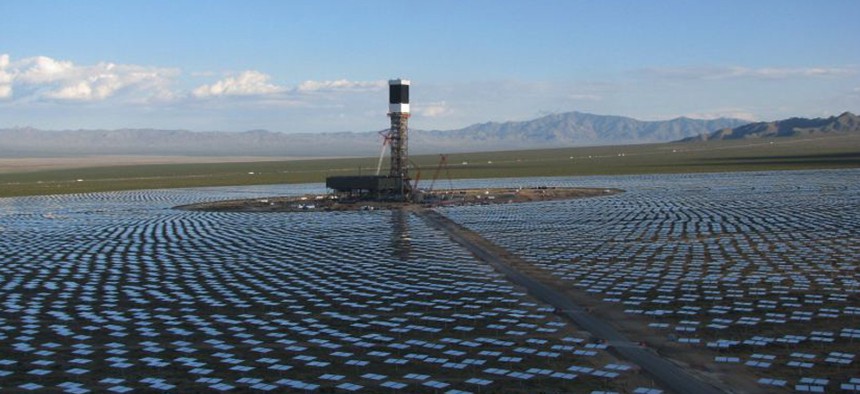Meet the Newest Big Solar Developers: Native Americans

BrightSource Energy
More dependable solar thermal systems are losing out to solar panels except, perhaps, on tribal lands.
The first phase of the world’s largest solar thermal power plant plugged into the California grid this week, the first of what was supposed to be a dozen big solar projects to be built in the desert southwest of the US. It also may be one of the last for a while.
When regulators licensed BrightSource Energy’s $2 billion, 377-megawatt (MW) Ivanpah Solar Electric Generating System in 2009, it was the first such solar thermal project to get the green light in California in nearly three decades. Unlike photovoltaic panels that directly convert sunlight into electricity, solar thermal power plants deploy tens of thousands of mirrors called heliostats that focus sunlight on liquid-filled boilers to create steam. The steam drives a conventional turbine to generate electricity. Solar thermal plants are far more efficient than solar panels and offer a more dependable source of power.
But as we’ve written before, many of those projects faltered in the face of environmental opposition—they displace the imperiled desert tortoise, among other critters—and competition from ever-cheaper photovoltaic projects that can be built close to cities without the need to construct multi billion-dollar transmission projects. Even big photovoltaic desert projects, which tend to be lighter on the land, have run into fierce fights.
There is, however, one place where Big Solar remains big business: Native American lands.
NEXT STORY: The Power of Teaching Girls to Code





